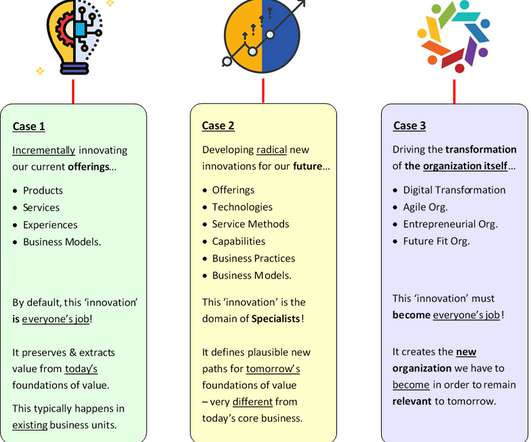12 Types of Innovation You Should Know in 2021
IdeaScale
APRIL 14, 2021
The paradigm is that companies cannot afford to rely strictly on their own internal methods of innovation, but can buy or license processes or inventions from other companies. This helps to further their goals while also providing the opportunity to license or use joint ventures to share their under-utilized technology or processes.





































Let's personalize your content